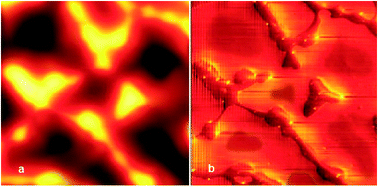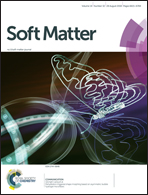Interplay between phase separation and dewetting in PS/PVME thin films: effect of temperature
Abstract
We studied the effects of temperature on the interplay between dewetting and phase separation at shallow and deep depths at two-phase temperatures in PS/PVME polymer blend thin films. Optical microscopy, AFM measurements, and ellipsometry analysis were performed to investigate the dewetting behavior of the films. At the deep quench depth (phase separation temperature of 115 °C), a two-layer film formed, consisting of a thin PVME layer directly on the surface of a silicon wafer (as the wetting layer) and a bulk layer which was the upper layer. In the bulk layer, the phase separation mechanism was controlled by an apparent nucleation and growth mechanism, which was driven by entropic and anisotropic limitations rather than thermodynamic preferences. After about 106 min of annealing, liquid–liquid dewetting occurred in the interface of the formed layers, triggered by Laplace pressure differences. However, at the shallow quench depth (phase separation temperature of 95 °C), a tri-layered structure formed in the thin films and concentration fluctuations at the interfaces of the formed layers triggered surface fluctuations and instabilities (dewetting phenomenon).



 Please wait while we load your content...
Please wait while we load your content...